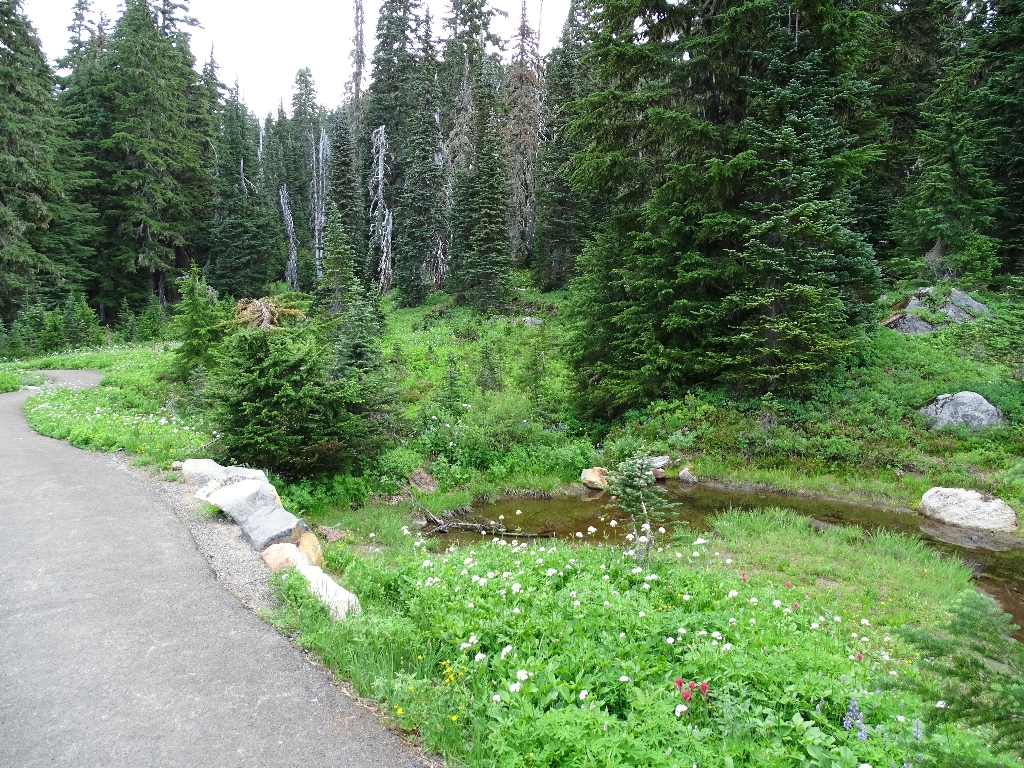
This tiny pond demonstrates the unique ecosystem here in the subalpine meadows of Mount Rainier. Life forms in the pool race with the weather to grow, reproduce, and store food in the short snow-free season between June and September. Soils around the pool are composed of fine particles of volcanic ash and mudflow materials. Tiny fragments of pumice, called ash, are so small and light that they can drift long distances through the air when ejected from a volcano. Many layers of ash from Mount Rainier coat Paradise meadows, but some ash layers were carried from Mount St. Helens and even from Mount Mazama in Oregon, which erupted and collapsed, forming Crater Lake. While ashy soil is nutrient-rich and provides fertile ground for the meadows, it is also quite fragile. Pocket gophers and meadow voles, members of the rodent family, dig small holes and tunnel trails year-round, which helps to stir and aerate the soil. Their activity is important because the fine soil is very easily compacted and eroded. In fact, as few as 12 footsteps in the same spot can compress the soil enough that plants will not be able to grow.
Is there something we missed for this itinerary?
Itineraries across USA

Acadia

Arches National Park

Badlands

Big Bend

Biscayne

Black Canyon Of The Gunnison

Bryce Canyon

Canyonlands

Capitol Reef

Carlsbad Caverns

Channel Islands

Congaree

Crater Lake

Cuyahoga Valley

Death Valley

Dry Tortugas

Everglades

Gateway Arch

Glacier

Grand Canyon

Grand Teton

Great Basin

Great Smoky Mountains

Guadalupe Mountains

Haleakalā

Hawaiʻi Volcanoes

Hot Springs

Indiana Dunes

Isle Royale

Joshua Tree

Kenai Fjords

Kobuk Valley

Lassen Volcanic

Mammoth Cave

Mesa Verde

Mount Rainier

North Cascades

Olympic

Petrified Forest

Pinnacles

Rocky Mountain

Saguaro

Shenandoah

Theodore Roosevelt

Virgin Islands

Voyageurs

White Sands

Wind Cave

Yellowstone

Yosemite

Zion